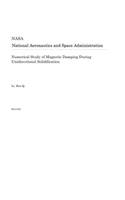
Numerical Study of Magnetic Damping During Unidirectional Solidification
Series:
A fully 3-D numerical model is developed to represent magnetic damping of complex fluid flow, heat transfer and electromagnetic field distributions in a melt cavity. The model is developed based on our in-house finite element code for the fluid flow, heat transfer and electromagnetic field calculations. The computer code has been tested against benchmark test problems that are solved by other comm
NaN
VOLUME
English
Paperback

A fully 3-D numerical model is developed to represent magnetic damping of complex fluid flow, heat transfer and electromagnetic field distributions in a melt cavity. The model is developed based on our in-house finite element code for the fluid flow, heat transfer and electromagnetic field calculations. The computer code has been tested against benchmark test problems that are solved by other commercial codes as well as analytical solutions whenever available. The numerical model is tested against numerical and experimental results for water reported in literature. With the model so tested, various numerical simulations are carried out for the Sn-35.5% Pb melt convection and temperature distribution in a cylindrical cavity with and without the presence of a transverse magnetic field. Numerical results show that magnetic damping can be effectively applied to reduce turbulence and flow levels in the melt undergoing solidification and over a certain threshold value a higher magnetic field resulted in a higher velocity reduction. It is found also that for a fully 3-D representation of the magnetic damping effects, the electric field induced in the melt by the applied DC magnetic field does not vanish, as some researchers suggested, and must be included even for molten metal and semiconductors. Also, for the study of the melt flow instability, a long enough time has to be applied to ensure the final fluid flow recirculation pattern. Moreover, our numerical results suggested that there seems to exist a threshold value of applied magnetic field, above which magnetic damping becomes possible and below which the convection in the melt is actually enhanced. Because of the limited financial resource allocated for the project, we are unable to carry out extensive study on this effect, which should warrant further theoretical and experimental study. In that endeavor, the developed numerical model should be very useful; and the model should serve as a useful tool for exploring ne...
Price Comparison [India]
In This Series
Bestseller Manga
Trending NEWS




















